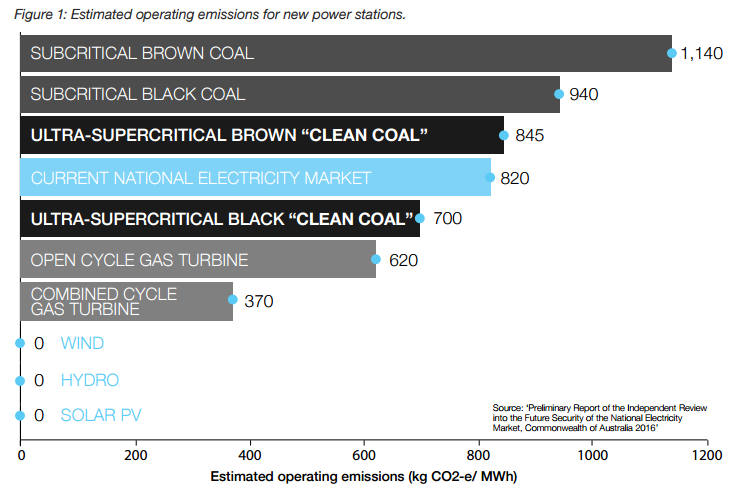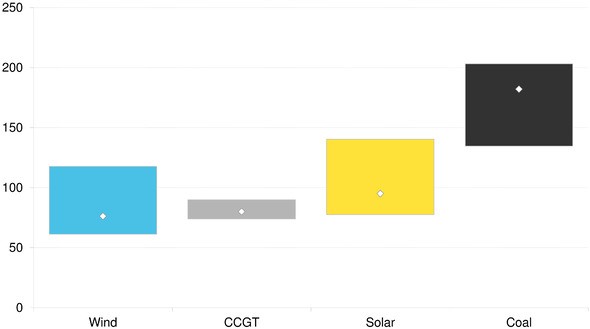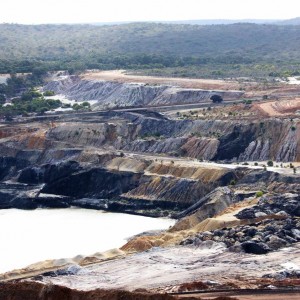New coal is still extremely polluting
More like ‘slightly less dirty coal’ (SLDC)

Source: The Climate Institute, Factsheet
What about carbon capture?
Carbon capture and storage (CCS) is an experimental technology that aims to capture greenhouse pollution from burning coal, and ‘transport’ it (sometimes hundreds of kilometres away requiring a vast and extensive network of pipelines) for storage underground, hopefully forever.
There are unknown consequences of storing gas underground. Scientists have identified risks to soil acidification and erosion associated with this process. Leakage can also occur, undermining the emission reduction benefits.
The other downside is the the whole process of capturing and liquefying the gas would use a significant amount of the energy the power station produces in the first place, making it even more expensive and inefficient.
Click here for six reasons why we think relying on carbon capture and storage is a risky strategy that’s likely to fail.
But don’t take our word for it, this is what the former head of BHP has said about carbon capture…
“I think it’s as big as the issue of nuclear waste … What are you going to do with millions of tonnes of carbon dioxide that is not nearly as compact as nuclear waste?…I don’t think the concept of pumping carbon dioxide down into a cavern under the ground is going to be the long term solution.”
Paul Anderson, director and former head, mining giant BHP Billiton, 2007
More recently the chief executive of CS energy, one of Australia’s major electricity generators, has said…
“It’s possible to retrofit this to existing coal-fired plants but commercially the numbers don’t stack up.”
Martin Moore, chief executive of CS Energy, 2017
Building new coal power is much more expensive than shifting to renewable energy.
Research from Bloomberg New Energy Finance found that to make back the cost of investment, electricity prices from a new ultra-supercritical coal plant could be as high as $203 per megawatt hour – which is more than three times the wholesale cost of electricity recorded last year!

By comparison, new wind farms are already producing power for around $52 per megawatt hour and solar costs are in a stunning free-fall at around $50 per megawatt hour, and these costs will continue to fall. In Victoria, new wind and solar projects are already slashing wholesale power prices and undercutting more expensive coal power.
New ultra-supercritical coal power stations can take up to ten years to build (this is before any addition of CCS) so they are likely to be obsolete by the time they are complete. This, combined with the stunning fall in the cost of clean energy is why no investors are interested in building new coal in Australia.

Even CCS wouldn’t address the toxic impact of coal mining.
WHAT ABOUT BASELOAD?
‘Basleoad’ is a phrase that some politicians love to throw around as an excuse to burn more coal, but what it really means is ‘inflexible’. Old coal generators are designed to operate at a consistent level, and cannot easily vary their output to match energy demand.
The other main categories are ‘variable’ (e.g. solar/wind/tidal/wave) and ‘dispatchable’ – that is power sources that can be quickly ramped up and down on demand (e.g. gas, hydro, virtual power plants, large-scale batteries, pumped hydro, solar thermal).
Old energy grids are designed around the baseload model. New ones are being designed around a combination of variable and dispatchable.
This new model works for a number of reasons. Solar and wind output can be predicted days in advance, allowing for grid operators to plan ahead and engage the required dispatchable output. You can also use ‘demand response’ systems where large industrial energy users are PAID to reduce consumption at rare times of very high demand (this is much more cost effective than building infrastructure that might only be needed a few hours each year – which occurs in baseload systems).
There are numerous reports and studies showing how Australia can reach 100% clean energy, one of the most recent is this study from the Australian the Australian National University Energy Change Institute. It shows that the Australian energy industry can deliver 100% renewable electricity by the early 2030s.